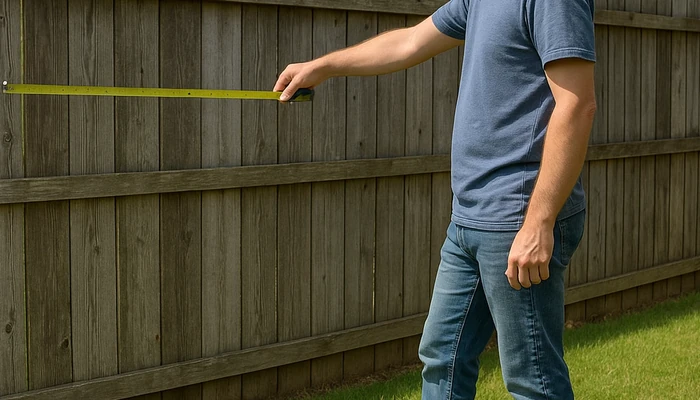How to Estimate Your Wooden Fence Costs: A Practical Guide
Budgeting for a new wooden fence may seem overwhelming at first, but with the right knowledge and steps, it can be a manageable process. As a homeowner, property manager, or general contractor in the Chicago area, understanding the cost factors is crucial for making informed decisions, especially when considering climate durability, pet safety, and winter maintenance.
Why Accurate Fence Cost Estimates Matter
Getting a clear idea of your wooden fence costs helps avoid budget surprises down the road. In areas like Chicago and its suburbs, unique factors—such as harsh winters and freeze–thaw cycles—can affect both material choices and installation methods, impacting the price.
Key Factors Affecting Wooden Fence Costs
- Fence length and height: Total linear footage and chosen height directly influence materials and labor.
- Type of wood: Cedar, pine, and redwood offer different price points and lifespans (learn about lumber quality).
- Design/style: Simple picket styles are more affordable than decorative or privacy fences (explore wooden fence designs).
- Site conditions: Uneven terrain, existing landscaping, or removal of old fencing can increase costs.
- Extras: Gates, decorative post caps, and specialty hardware all add up.
Chicago & Suburban Considerations
Chicago’s climate means your fence will face snow, ice, and shifting soil. Choosing pressure-treated or rot-resistant wood, and confirming posts are set below the frost line, is important. Local building permits may also require specific installation depths for safety.
Average Wooden Fence Cost Table (Per Foot)
| Wood Type | Typical Range (Materials Only) |
Labor (Per Linear Ft) |
|---|---|---|
| Pine (Pressure-Treated) | $10 – $16 | $8 – $12 |
| Cedar | $15 – $25 | $10 – $14 |
| Redwood | $20 – $35 | $12 – $18 |
Note: Costs above are estimates for the Chicago region. Actual project prices may vary based on complexity and access.
Step-by-Step: Calculating Your Total Fence Costs
- Measure Perimeter: Walk your property and measure the total length where the fence will be installed.
- Choose Height & Style: Pick a height (commonly 4–6 feet) and design that suits your needs—think privacy, pet security, or curb appeal (see accessories for fences).
- Select Your Material: Research lumber types for cost and durability (see detailed material calculators).
- Add Gates & Extras: Factor in the number and type of gates, plus any finishes (e.g., stain or sealant for winter protection).
- Consider Labor or DIY: Labor is a major cost—get several quotes, or assess skills for a do-it-yourself project.
Design Tips for Cost Efficiency and Pet Safety
- Opt for straight runs over curves to reduce labor and material waste.
- Pet owners: Solid boards and minimal gaps keep animals safer (see common wood fence issues).
- Consider no-dig systems in areas with tough soil or utility lines.
Winter Care: Protecting Your Wooden Fence Investment
The Chicago winter demands thoughtful fence care. Seal or stain your fence before winter to prevent water damage and splitting. Clear snow buildup from fence lines, and perform quick repairs after major weather events to keep costs down long term. Find more climate selection reasons.
Tools and Resources to Simplify Cost Calculations
There are a range of free online calculators that help estimate material needs and span requirements. This span calculator by the American Wood Council is great for checking how far you can space posts safely. Always check with local authorities about permits before you start!
When To Call a Fence Pro
If your site is sloped, you have complex design needs, or you’re aiming for top-tier pet safety, it’s a good time to consult a fence professional. For a complete service including installation, warranty, and post-winter inspections, consider engaging an expert in your area. View options for wood fence installation in Chicago or explore other popular styles like the vinyl fence of Chicago.
Frequently Asked Questions
- How deep should wood fence posts go in Chicago? At least 36 inches, below the frost line for stability (City of Chicago building code).
- Does fence design affect snow impact? Yes! Open designs allow snow to pass through, while solid panels may need extra bracing.
- What fence style is best for dogs? Solid board or closely spaced pickets offer the best pet security.
Explore more on eco-friendly timber fencing and other cost-saving ideas on our blog hub.
About the Author
Reviewed by: Paul G., MA – Senior Fence Installer at Chicago Commercial Fencing. With over 22 years of hands-on experience building residential and commercial fences in the greater Chicagoland area, Paul specializes in wood fence installation, climate adaptation, and local permitting. His work is known for both craftsmanship and code compliance.

wood best fencing in Chicago, wood fence permit Schaumburg, wood fencing in the city of Franklin Park, wood best fencing in Addison, wood fence secure Elgin, wood best fences in Evanston, wood fences in Melrose Park, wood fence security Bensenville IL, wood fencing Oak Park il, wood best fences of Skokie IL
